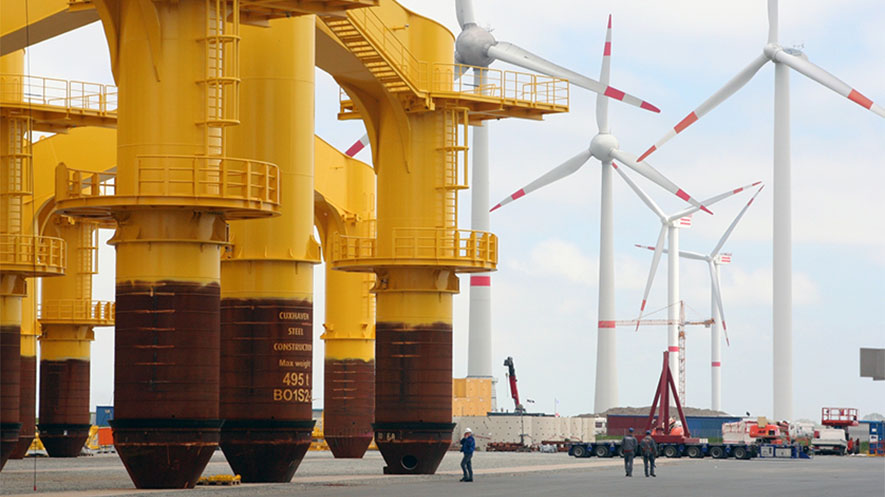After decreasing prices of crude oil have forced layoffs throughout the oil and gas industry, some of the players in the offshore oil and gas industry are looking toward a new future: offshore wind. Combining the nascent offshore wind industry with decades of offshore engineering, manufacturing, and installation know-how creates an opportunity for traditionally offshore oil and gas companies and rising-star renewables to thrive.
“As oil and gas companies look to ‘unconventional’ energy markets, right now is the perfect time for oil and gas companies to fully engage in the offshore wind industry,” says Alana Duerr, the U.S. Department of Energy's offshore wind lead.
When Duerr attended the 2017 Offshore Wind Executive Summit: The Parallels of Wind, Oil and Gas, she was surprised to find that less than 15% of the attendees identified themselves as working in the wind industry, and that more than 50% of the event’s attendees had not yet dipped their toes into the waters of offshore wind.
“You’re hitting a whole new group of people with deep knowledge of the challenges that come with working in the offshore environment and the energy market, but who don’t yet have the experience in the offshore wind space,” Duerr says.
The good news is that oil and gas companies may find the world of offshore wind familiar. Many technologies used in the offshore wind industry represent innovations that have stemmed from the offshore oil and gas industry. Foundations are fabricated in the same yards that build oil rigs, jacket substructures used for offshore drilling rigs are used in offshore wind, and all of the different floating foundations proposed for offshore wind have their roots in deep-water drilling.
But it is not just their experience with similar technologies that makes oil and gas companies valuable to the offshore wind industry. The marine environment presents its own unique challenges. For example, construction in the open ocean requires a highly skilled crew. When Deepwater Wind built the Block Island Wind Farm, they ultimately had to complete the foundation and turbine installation operations using vessels from the Gulf of Mexico that have been used in the oil and gas industry.
“There’s significant engineering know-how, and construction and installation experience in the Gulf because that’s where the oil and gas market has grown in the United States,” Duerr says. “There’s a role for these oil and gas service suppliers to play in this new U.S. industry, as they have significant experience in offshore construction that is not present on the Atlantic coast.”
Bringing oil and gas service companies into a new industry is not always simple. Duerr would like to see more companies working in oil and gas explore the potential of working in the offshore wind industry. Success for the “first movers” has relied on finding champions: someone in the company who “has an idea, pursues it, and starts to make noise about it,” Duerr says.
Currently, Europe is the global leader in the offshore wind manufacturing space, but transporting materials across the Atlantic comes at a premium. Much like the Block Island Wind Farm, it is expected that foundations for the initial offshore wind projects will be shipped from Gulf Coast facilities—but once the industry’s construction pace intensifies, Duerr expects to see companies expanding to the East Coast. Construction for Block Island Wind Farm’s six turbines did not require a purpose-built shipyard, but developing larger-scale offshore wind farms could require specialized manufacturing and assembly lines for offshore wind foundations to reduce the cost of foundations.
“Typical shipyards in the Gulf of Mexico are used for one-off type manufacturing; however, efficiently and effectively fulfilling an order of 50 offshore wind foundations at a competitive price may require some significant changes to existing manufacturing facilities or investment in new ones. New facilities will likely be located closer to the current offshore wind market demands on the East Coast,” Duerr says.
There are challenges to face, but many of the solutions lie within U.S. domestic expertise. Luckily, oil and gas companies can bring their knowledge and experience in developing large-scale offshore infrastructure projects up the Atlantic seaboard to create a thriving stateside industry for offshore wind energy, thereby moving the dial toward a cleaner, more sustainable future.





